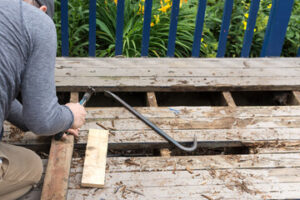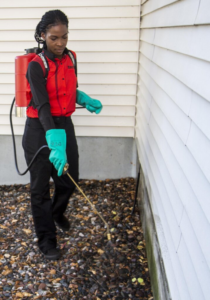Construction is the building or modification of structures. It covers a broad range of projects from offices to dams and bridges.
A robust construction industry benefits workers and end users alike. It pays relatively high wages to a demographic that would otherwise struggle to find opportunity, and it creates structures that people genuinely need. Contact Pacgen Construction now!

A construction schedule is a valuable tool that informs your team about what to do and when. However, a poorly managed schedule can result in costly reworks, loss of productivity and may even cost your company its reputation.
While traditional methods like a pencil and paper may work for your residential home construction, a commercial project needs advanced scheduling techniques to ensure labor, equipment, materials and resources flow smoothly. The problem is, many contractors use old-fashioned tools such as Outlook and Gmail to create and manage their schedules, which are geared toward events and not resources. This approach often leads to scheduling mishaps, including scheduling gaps, missed deadlines and inaccurate resource allocation.
Unforeseen site conditions, changes to project scope, adverse weather and unexpected material availability are just a few of the challenges that can delay your construction project. However, most of these issues can be proactively addressed during the creation of your project plan by incorporating contingencies and flexibilities.
When a problem arises, the most effective strategy is to identify and respond quickly. For example, if you’re behind schedule due to unforeseen circumstances, you can accelerate your project by fast-tracking tasks that don’t directly impact the critical path. You can also speed up the project’s completion date by adding extra manpower, introducing weekend shifts or employing more efficient equipment. However, be careful not to overdo it. Adding resources will inflate your budget and increase the risk of schedule slips and rework.
The other key to success is clear communication. Regular meetings, document sharing and using construction software can keep all stakeholders informed about the progress of your project and avoid scheduling problems. This also ensures that your team has access to the latest version of your project plan and can resolve any discrepancies.
Another proactive scheduling technique is resource leveling, which focuses on optimizing your project’s resource usage. It begins by identifying the project’s constraints, which are typically people and equipment. Then, you can adjust your project’s scope and deadlines to balance the demands on these resources.
Problems with Fund Management
Construction companies must have free cash to pay for several things semi-regularly, including payments to subcontractors, vendors, suppliers, and employees. It’s also possible that a company could experience delays in receiving payments from customers, and this can cause financial issues for the construction business.
For most construction businesses, a significant portion of success is based on competence in two things: acquiring new customers and getting paid. This is why many growing companies departmentalize sales and finance. While this is a good idea, it can create communication problems that lead to the next problem:
When sales and finance teams are not working together effectively, there is a chance that they will have different goals for a project. This can result in the misunderstanding of project requirements and budgets. This is a common issue for construction projects and can contribute to schedule delays, cost overruns, and other financial problems on the jobsite.
One solution to this problem is to use technology to manage documents, and there are a lot of great options on the market for automation systems, software for different devices, and virtual task boards. However, it’s important to remember that even the best systems will only work if everyone uses them correctly and updates them regularly.
For construction companies that require a level of security for their funds, it’s often best to use a fund control company for large projects. This is an independent third party that manages the distribution of money to the GC and all subcontractors and suppliers on the project. They also typically provide other services such as reviewing the construction budget and work progress inspections. This can help avoid payment delays, but it cannot prevent them completely. It’s still essential to send notices, demand letters, and liens as needed. This will help to keep the project on track and ensure that all parties are protected financially.
Problems with Theft and Vandalism
Theft in construction is a serious problem that affects more than just the financial cost of replacing stolen equipment and materials. When theft occurs, construction timelines and budgets can be severely disrupted. It can also lead to a loss of trust in the project by both clients and employees, as well as damage a company’s reputation.
Construction sites are a thief’s paradise, offering a smorgasbord of high-value items that can easily be resold. From lumber to copper, power tools to heavy equipment, these sites are a hotbed for crime and vandalism. And with the current scarcity of many construction essentials, thieves are more incentivized than ever to snag these items and make quick money.
While it’s difficult to prevent theft, there are a few steps that companies can take to minimize losses. For example, they can establish a security plan that includes fences and guards, and implement record-keeping systems to track inventory and ensure it’s properly safeguarded. Regular site inspections are also crucial to detect potential problems and address them promptly.
Additionally, it’s important to set clear boundaries between different parties on a construction site. This includes between employees, subcontractors and other contractors. This can help to avoid confusion and protect against theft and other forms of property crime.
Another major source of theft is from unauthorized individuals entering the construction site. These individuals can be clients, neighbors, or even criminals looking for a quick buck. It’s critical for companies to secure their sites during off hours, especially if they’re located in an unsafe or remote area.
The effects of theft and vandalism can have severe consequences for a construction project, from delays in the timeline to reduced work quality. It’s also important for companies to work with local law enforcement agencies and the community to develop strategies to reduce these issues. The good news is that these strategies are often affordable and can significantly reduce or eliminate losses. By implementing these strategies, construction businesses can save time and money while ensuring the success of their projects.
Problems with Material Sourcing
Material procurement is a significant part of construction project management. It involves a complex process with many moving parts, including planning, supplier management, and sustainability. This isn’t easy, and the smallest oversight can cause major problems. In addition, the construction industry is constantly changing, which can make it difficult to predict future needs. Getting the right materials at the right time is crucial.
The journey from the manufacturer to the job site has a huge impact on a project’s carbon footprint. The trucks, cargo ships, and planes that move building materials across countries and oceans consume fuel and produce emissions. These environmental costs can add up quickly, especially if the cost of fuel is increasing rapidly. This is why it’s important to work with suppliers who can provide sustainable materials that are both safe for the environment and cost-effective.
While the majority of construction materials are purchased from local suppliers, some are imported from abroad. When this is the case, there may be issues with customs clearance or other delays. These problems can add up to a substantial delay in delivering the required materials to the job site. In some cases, it may be necessary to have backup suppliers in place so that the project doesn’t fall behind schedule.
As well as dealing with supply chain issues, construction companies must also keep track of their inventory. This is essential for ensuring that they don’t run out of key materials before the completion of a project. Construction firms can mitigate this problem by establishing relationships with multiple suppliers and ensuring that the project has a flexible budget for unexpected purchases.
Keeping accurate records on material quantities is an excellent way to reduce the risk of running out of supplies. This can also protect the project’s profit margins by avoiding over-ordering and paying extra for storage. The best way to do this is to regularly check prices and follow market trends, and if possible, buy the materials when they’re at their lowest price point.
The most important thing to remember when it comes to material sourcing is that effective communication is key. It’s vital to ensure that all stakeholders are on the same page regarding the details of the purchase, delivery times, and other information. This prevents confusion and allows everyone to work together effectively.








